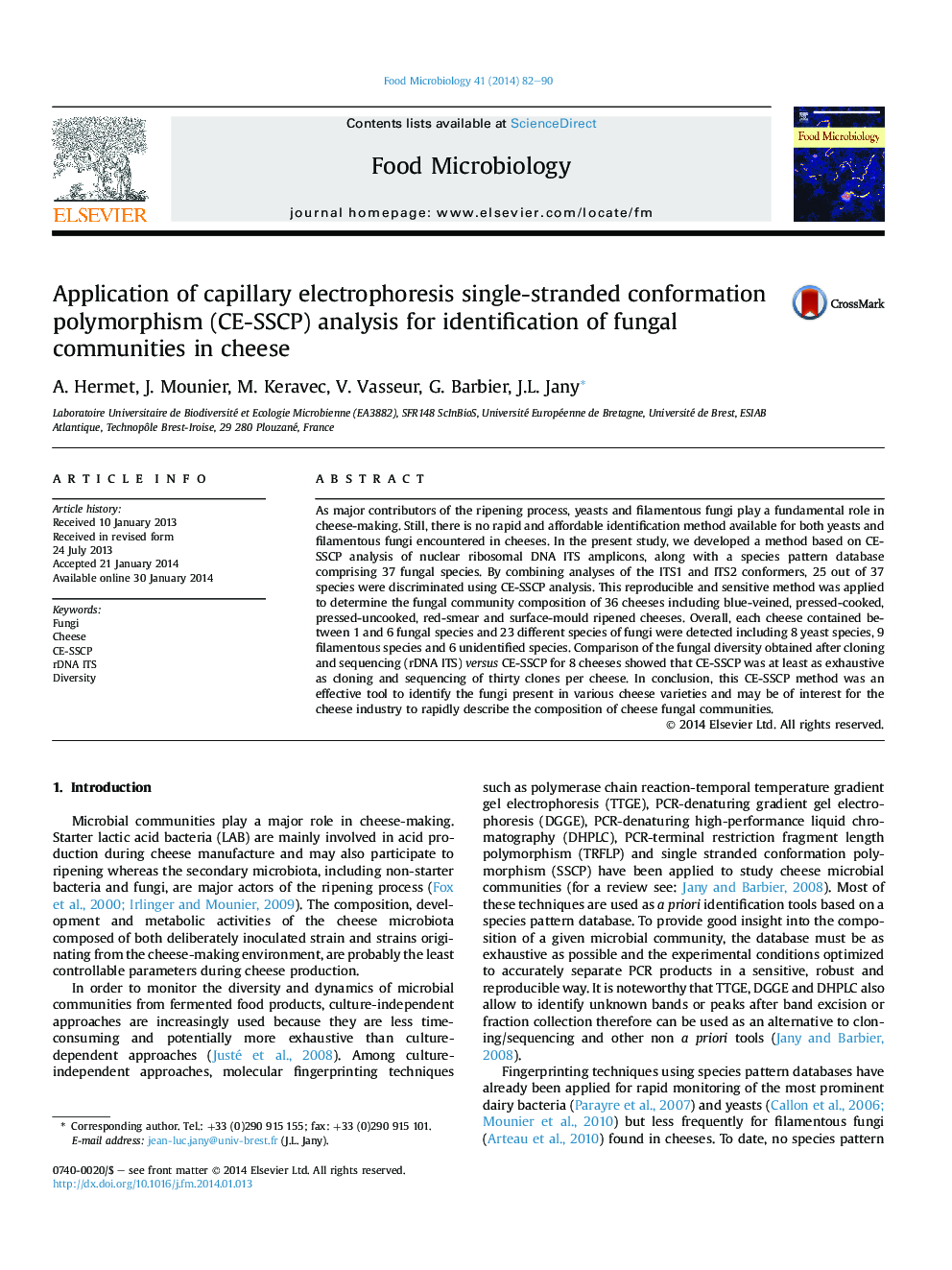| Article ID | Journal | Published Year | Pages | File Type |
|---|---|---|---|---|
| 4362837 | Food Microbiology | 2014 | 9 Pages |
•A method based on CE-SSCP analysis of nuclear ribosomal DNA ITS amplicons was developed.•A CE-SSCP species pattern database comprising 37 fungal species was built.•Reproducibility and sensitivity of the method were assessed.•Thirty six cheeses were analyzed using the PCR-CE-SSCP method described in the present study.•Each cheese contained between 1 and 6 fungal species and overall, 23 different species of fungi were detected.
As major contributors of the ripening process, yeasts and filamentous fungi play a fundamental role in cheese-making. Still, there is no rapid and affordable identification method available for both yeasts and filamentous fungi encountered in cheeses. In the present study, we developed a method based on CE-SSCP analysis of nuclear ribosomal DNA ITS amplicons, along with a species pattern database comprising 37 fungal species. By combining analyses of the ITS1 and ITS2 conformers, 25 out of 37 species were discriminated using CE-SSCP analysis. This reproducible and sensitive method was applied to determine the fungal community composition of 36 cheeses including blue-veined, pressed-cooked, pressed-uncooked, red-smear and surface-mould ripened cheeses. Overall, each cheese contained between 1 and 6 fungal species and 23 different species of fungi were detected including 8 yeast species, 9 filamentous species and 6 unidentified species. Comparison of the fungal diversity obtained after cloning and sequencing (rDNA ITS) versus CE-SSCP for 8 cheeses showed that CE-SSCP was at least as exhaustive as cloning and sequencing of thirty clones per cheese. In conclusion, this CE-SSCP method was an effective tool to identify the fungi present in various cheese varieties and may be of interest for the cheese industry to rapidly describe the composition of cheese fungal communities.
